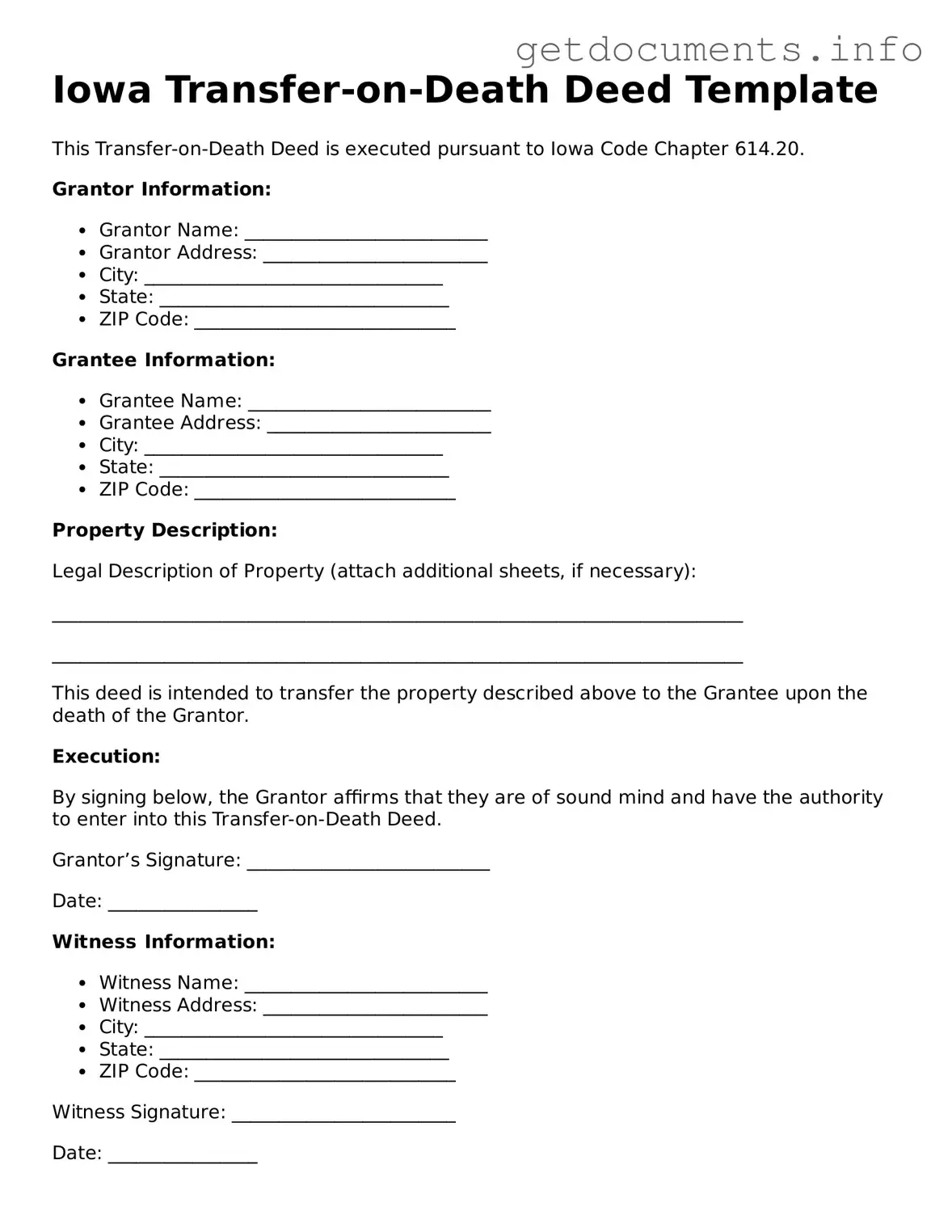Free Transfer-on-Death Deed Template for Iowa
The Iowa Transfer-on-Death Deed form is a legal document that allows property owners to transfer their real estate to designated beneficiaries upon their death, without the need for probate. This form can simplify the process of passing on property, ensuring that your wishes are honored while also providing a smoother transition for your loved ones. If you're considering this option, take the first step by filling out the form below.
Click the button below to get started!
Access Transfer-on-Death Deed Editor
